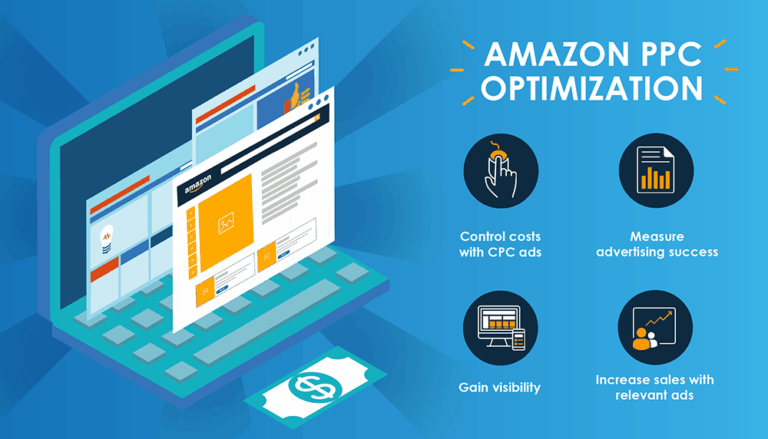Power from natural sources that constantly replenish themselves represents a fundamental shift in how societies generate electricity. These sustainable options include sunlight, wind, and water power. Unlike traditional methods, they produce minimal environmental impact during operation.
This contrasts sharply with finite resources like coal, oil, and gas. These conventional fuels take millions of years to form. When burned, they release harmful emissions that contribute significantly to global warming.
The transition towards cleaner alternatives has become increasingly urgent due to climate change. Fortunately, these technologies now offer compelling economic advantages. They have become more affordable than conventional options in many markets.
The United Kingdom stands at the forefront of this global transformation. This guide will explore Britain’s journey towards a sustainable future. It examines the technologies, policies, and opportunities shaping the nation’s energy landscape.
Key Takeaways
- Natural power sources replenish themselves continuously, unlike finite fossil fuels
- Burning traditional fuels like coal and gas releases harmful emissions that accelerate climate change
- The shift to sustainable alternatives addresses both environmental concerns and economic realities
- Cleaner technologies have become cost-competitive with conventional energy production methods
- The UK plays a significant role in the global movement towards more sustainable power generation
- This transition creates substantial employment opportunities across various sectors
- Understanding this shift is crucial for grasping Britain’s future energy strategy
The Evolution of Renewable Energy in the UK
Beginning with the Industrial Revolution, the United Kingdom established patterns of fossil fuel consumption that would shape its energy landscape for over two centuries. Coal, oil, and gas became the dominant fuels powering economic growth across the world.
This reliance on traditional energy sources carried significant consequences. The burning of fossil fuels accounts for three-quarters of global greenhouse gas emissions. These emissions drive climate change and create urgent environmental imperatives.
Historical Growth and Transition from Fossil Fuels
The UK’s energy policy has undergone a remarkable transformation. The nation has shifted from complete dependence on coal and oil gas to gradually integrating cleaner alternatives. This transition represents a fundamental change in how countries approach power generation.
Between 2015 and 2024, global renewable electricity capacity surged by approximately 2,600 gigawatts. This 140 per cent increase dramatically outpaced fossil fuel capacity growth of just 16 per cent. Despite fossil fuels still generating nearly 60 per cent of the world’s electricity, cleaner sources are rapidly gaining ground.
Government Policies and Market Trends
Key government initiatives have accelerated Britain’s move away from burning fossil fuels. Policies include carbon pricing mechanisms, subsidies for sustainable power, and legally binding emissions reduction targets. The UK’s commitment to achieving net-zero greenhouse gas emissions by 2050 has driven unprecedented change.
Market trends show substantial progress in reducing dependency on traditional energy sources. Strategic investments in renewable infrastructure, technological advancements, and growing public awareness of climate issues continue to shape the nation’s electricity generation landscape.
Understanding Renewable Energy Sources
A variety of sustainable power generation methods utilise naturally occurring phenomena to create electricity with minimal environmental impact. These technologies harness resources that replenish continuously through natural cycles.
Solar, Wind, Hydro, and Other Natural Resources
Solar power systems capture sunlight through photovoltaic panels. This technology converts light directly into electricity without moving parts or emissions.
Wind installations use turbines to transform kinetic air movement into electrical power. Both onshore and offshore facilities have seen rapid expansion globally.
Hydroelectric generation remains the largest established clean power source worldwide. It relies on water flow through dams or river systems to produce reliable electricity.
| Power Source |
Primary Resource |
Key Technology |
Global Share |
| Hydropower |
Water flow |
Turbines and dams |
Largest renewable source |
| Wind power |
Air movement |
Onshore/offshore turbines |
Fastest growing |
| Solar energy |
Sunlight |
Photovoltaic panels |
Rapid expansion |
| Biomass systems |
Organic materials |
Combustion and conversion |
Traditional and modern uses |
Modern Biofuels and Geothermal Innovations
Geothermal systems extract heat from beneath the Earth’s surface. This provides heating, cooling, and electricity with minimal environmental impact.
Modern biofuels include bioethanol and biodiesel from crops like corn and sugarcane. These serve as transport fuel alternatives in many countries.
Biomass production uses agricultural waste and energy crops. It can replace traditional fuels in heat and power applications.
Frontier Energy Ltd Impact on Clean Energy Initiatives
Forward-thinking organisations are demonstrating how commercial success can align with environmental responsibility in the energy sector. Frontier Energy Ltd exemplifies this approach through its strategic clean energy projects across the United Kingdom.
Case Studies and Recent Developments
The company’s installations showcase measurable reductions in harmful emissions. Their wind and solar projects prevent significant greenhouse gas emissions annually.
Air pollution from burning fossil fuels causes seven million premature deaths globally each year. Frontier Energy Ltd’s initiatives directly address this health crisis.
The economic impact is substantial. Air pollution-related health damage costs $8.1 trillion yearly, representing 6.1% of global GDP.
Clean energy sector employment reached 16.2 million people globally in 2023. Frontier Energy Ltd contributes to this job creation while reducing carbon footprints.
Their partnerships with local communities accelerate technology deployment. These collaborations support the UK’s climate targets and create sustainable opportunities.
The transition from burning fossil fuels to clean alternatives tackles both climate change and public health concerns. Industry leadership in renewable energy technologies makes this possible.
Innovative Renewable Energy Technologies
Breakthrough developments in energy technologies are transforming the global power landscape, making clean alternatives increasingly competitive with traditional fossil fuels. These advancements address both cost and reliability concerns that once hindered widespread adoption.
Offshore Wind and Solar Breakthroughs
Offshore wind technology has achieved remarkable cost reductions, becoming 53 per cent cheaper than fossil fuel alternatives. Larger turbines and improved installation techniques have enhanced electricity generation capacity.
Solar innovations have similarly reduced costs by 41 per cent compared to conventional fuels. Advanced photovoltaic systems now deliver more efficient power production across diverse climates.
Role of Frontier Energy in Advancing Technology
Frontier Energy contributes significantly to technological progress through research and deployment of cutting-edge systems. Their work on turbine efficiency and grid integration enhances renewable energy reliability.
The company’s innovative approaches to offshore wind farm design maximise electricity output while minimising environmental impact. These developments support the global transition towards sustainable power sources.
Economic and Environmental Benefits
Over 90 per cent of new renewable projects now cost less than fossil fuel alternatives. This economic advantage transforms energy markets worldwide.
The shift creates substantial employment opportunities. Renewable energy generates three times more jobs per dollar invested compared to the fossil fuel industry.
Environmental benefits include reduced air pollution and elimination of greenhouse gas emissions during electricity generation. These technologies preserve natural resources while meeting power demands.
Conclusion
The global shift in investment towards clean power is undeniable. In 2024, a record $2 trillion was committed, far surpassing spending on fossil fuels. This financial momentum underscores the economic viability of the transition.
This move is crucial for tackling climate change. To avoid its worst effects, global emissions must be cut nearly in half by 2030. Achieving net-zero by 2050 is the ultimate goal.
The benefits extend beyond the environment. Approximately 6 billion people live in countries that import fossil fuels. Domestic renewables enhance energy security and create millions of jobs worldwide.
The UK has positioned itself as a leader in this green revolution. With a diverse mix including offshore wind and solar, the nation demonstrates a viable path forward. The future of electricity generation is clean, secure, and economically sound.
FAQ
What are the main differences between renewable and fossil fuels?
The key distinction lies in their source and impact. Power from sources like sunlight or wind is naturally replenished and produces minimal greenhouse gas emissions. In contrast, burning fossil fuels such as coal and oil releases significant carbon dioxide, contributing to climate change.
How does offshore wind power contribute to the UK’s electricity generation?
Offshore wind is a cornerstone of the UK’s strategy for clean electricity. It harnesses powerful, consistent winds at sea to generate substantial power, helping to reduce reliance on gas and coal. This technology is vital for cutting emissions and meeting climate targets.
What role do companies like Frontier Energy play in the transition to clean power?
Firms such as Frontier Energy are instrumental in developing and deploying advanced energy systems. They drive innovation in technologies like offshore wind and modern biofuels, creating jobs and accelerating the shift towards sustainable power production for a healthier planet.
Are renewable energy sources reliable for consistent power supply?
While sources like solar and wind are variable, advances in technology and energy storage are greatly improving their reliability. Integrating diverse resources, including hydro and biomass, into a smart grid helps ensure a stable and consistent electricity supply for homes and businesses.
What are the economic benefits of investing in renewable technologies?
Investing in these technologies stimulates economic growth by creating skilled jobs in manufacturing, installation, and maintenance. It also enhances energy security by using domestic resources, reducing dependence on imported fuels and stabilising long-term power costs.










